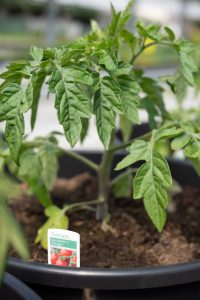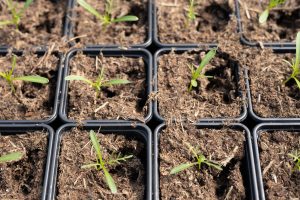How to Start Growing Vegetables
It might be hard to imagine life before supermarkets, but years ago, many people used to grow their own vegetables, before greengrocers and supermarkets made so many varieties of fruit and veg readily available all year round.
Growing your own vegetables in your garden is becoming more popular again, including amongst young people, as we are concerned about where our food comes from, how far it has travelled, how much food is wasted and how much packaging is used. There are a lot of varieties of veg that we can grow easily and well in our homes and gardens! Plus, the experience of getting out in your garden can be relaxing, really enjoyable and satisfying! So, why not have a go yourself?! Here are some helpful tips for beginner gardeners from an expert owner of a garden centre in Kent.
 .
. 

Where to start
Start by thinking about the veg you like to eat and do some research to see how well it grows in the UK. You can find out how easy it is to grow, and the best time to plant, as well as harvest.
Some of the easier vegetables to start growing:
In your kitchen on the windowsill:
Tomatoes
Salad leaves
Lettuce
Herbs
Outdoors in the ground:
Radishes
Onions
Potatoes
Carrots
Outdoors vertically on vines:
Peas
Runner beans
What you need to start
Seeds or young plants, soil and pots or growbags
Some extras that might come in handy
Watering can, fertiliser or plant food (appropriate for the specific veg), canes and wire if growing vertical plants, some netting to protect outdoor plants, a fork or spade if you are going to be digging.
How to grow vegetables from seeds
You can purchase your seeds from garden centres or online. The packets should detail how to grow the seeds, when the plant and when to harvest crops. Some seeds may need to be started off inside in the warm, for instance, in a greenhouse, conservatory or on your windowsill.
Fill a small pot – you can buy seed trays, or use yogurt pots, etc. – with good soil and spread the seeds out on the surface, pressing them down slightly. Lightly cover the surface in compost. Water the seeds and keep in a warm, draught-free spot indoors whilst the seeds germinate.
out on the surface, pressing them down slightly. Lightly cover the surface in compost. Water the seeds and keep in a warm, draught-free spot indoors whilst the seeds germinate.
When the seedlings have grown a couple of centimetres tall, gently transfer them to a larger pot. Fill the pot with compost and use your finger or a dibber to make a hole in the middle of the compost. Gently lift the plants from the seed tray by their leaves and place the plant into the hole. Use your fingers to carefully but tightly push the compost around the root of the plant. Gently water and keep indoors. Some plants such as herbs can be kept indoors. Others such as cucumbers should transfer to outdoors as directed by the packet.
Some seeds can be planted outside straight in the ground, in grow bags, in pots or in raised beds. Again, check the packet to find out where and when to plant.
Prepare good quality soil, free of weeds. Soil needs to be able to drain to prevent roots from rotting. If planting directly into the ground, check whether water tends to just sit on the surface or stays waterlogged for a long time. Planting vegetables in raised beds or putting stones in the bottom of pots can help with drainage.
Scatter the seeds over the soil: either in neat rows or randomly, depending on the crop. It’s a good idea to label your plants – you can use wooden lolly sticks! Cover the seeds in a light layer of soil or follow specific instructions from the seed packets.
Some veg may need covering with a bit of net to keep off birds, caterpillars and butterflies that can do a lot of damage to crops. Others may need sticks or bamboo canes to grow up.
Alternatively, you can buy young plants as opposed to seeds, which can be easier to grow to start with.
What if I have a small garden?
There are still plenty of things you can grow if you have a small garden. Some plants such as herbs can be kept on windowsills, some such as tomatoes grow well in hanging baskets, some can stay in large pots outside, or some take up less room by growing vertically such as peas and runner beans.
Other top tips
Buy seeds for veg you like and will eat and don’t over plant – you don’t want anything to go to waste. (Plenty of veg make good soups and sauces that you can freeze, or you could give away your surplus crop to friends!) Check the packet for how much veg you can expect the product to grow. You can save seeds for later.
If planting things in the ground such as potatoes or onion sets, rotate the crops every couple of years to improve the soil.
Be aware of common issues or pests that can affect different plants and how to prevent or solve these problems, should they occur. A quick Google search will tell you everything you need to know – the RHS website is a great resource.
Some plants will keep producing crops that can be picked regularly from the same plant, such as tomatoes, whereas others like salad leaves will need to be planted regularly to keep up the supply, so for example, don’t plant all of your lettuce seeds at the same time as then, all the crops will need to be harvested all at once. Things like courgettes and runner beans should be picked regularly to encourage them to keep cropping. Most vegetables are annuals – they grow and provide crops for one year. Others, like strawberry plants, can be kept for multiple years if well looked after.
Choose good quality seeds and seed compost to give yourself the best chance. If you don’t have much luck with seeds the first time, you could buy young plants instead.
Pay attention to the best season to plant – some are to be planted in spring, others when the soil is warmer in summer. As gardening relies on the weather, things may not always go to plan. Try everything once and learn from the experience! It’s all about trial and error: your hard work will pay off in the end!
Find out more:
Gardeners World
Vegetable Basics – RHS
The Best British Vegetables to Grow at Home
General Tips for a Beginner Gardener
Read some tips for how to get started with gardening
HelloGrads veggie recipes to try:
Asparagus – with Romesco Sauce
Aubergine – stuffed with Pesto & couscous
Peppers, Tomatoes – Vegetable tart
